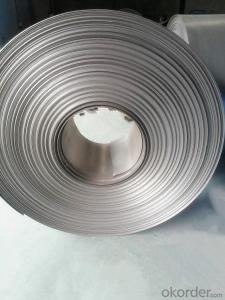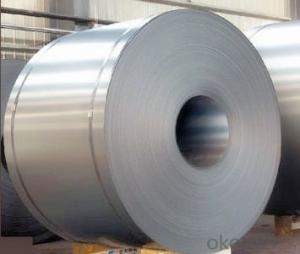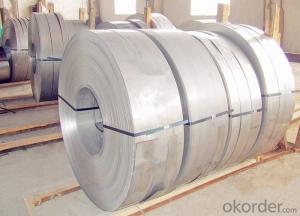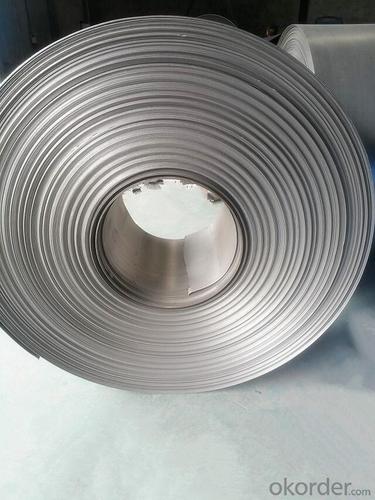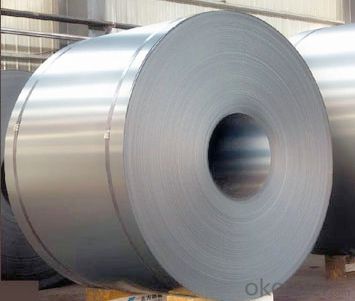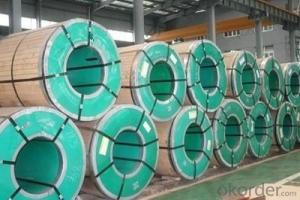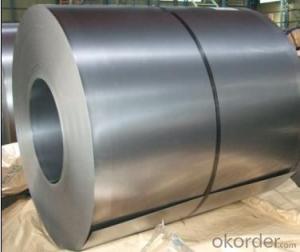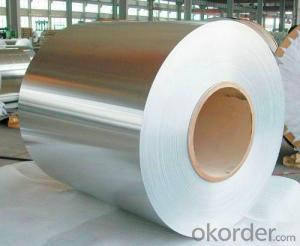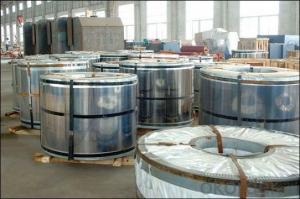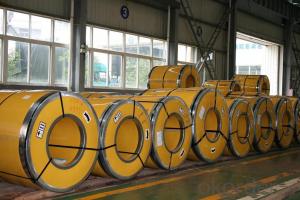201 SERIOUS HOT ROLLED STAINLESS STEEL COILS/SHEETS
- Loading Port:
- Guangzhou
- Payment Terms:
- TT OR LC
- Min Order Qty:
- 100 m.t.
- Supply Capability:
- 20000 m.t./month
OKorder Service Pledge
OKorder Financial Service
You Might Also Like
Quick Details
| Grade: | 2B | Standard: | JIS,AISI,GB | Length: | as customers' requested |
| Thickness: | 2.5mm;3.0mm;4.0mm or as required | Width: | 485mm,510mm,600mm or as required | Place of Origin: | Shanxi China (Mainland) |
| Brand Name: | CMAX | Model Number: | 201 | Type: | Coil |
| Application: | Decoration,Boiler Plate,Chemical Industry,Container plate,ship | Certification: | SGS,ISO | Color: | natural color |
| Available Finish: | 2B/BA/8K/No.4/SB/HL | Edge: | slit edge and mill edge | Features: | accurate dimensions |
| Manufacture technology: | cold drawn,pickling, hot rolled and cold rolled | DDQ: | slivery bright surface | Quality: | high quality Hot rolled stainless steel coil 201 |
| Stock: | Always in stock | Item: | Hot rolled stainless steel coil 201 |
Packaging & Delivery
| Packaging Detail: | Standard export packing or as customer's requirement Hot rolled stainless steel coil 201 |
| Delivery Detail: | In 15 days |
Specifications
Hot rolled stainless steel coil 201
Width:485mm,510mm,600mm or as required
Thickness: 2.5mm;3.0mm;4.0mm or as required
Product Description
Stainless steel coil; stainless steel cold rolled coil;201 stainless steel coil; stainless steel coil
A. stainless steel coil
B. with competitive prices and fast delivery
C. High quality
Tisco 201 stainless steel coil
Thickness: 2.5mm;3.0mm;4.0mm or as required
Width: 485mm,510mm,600mm or as required
Length: As required
Material:201
201 stainless steel coil chemical composition
201 stainless steel coil | ||||||||
Grade | Chemical composition | |||||||
C | Si | Mn | P | S | Ni | N | Cr | |
% | % | % | % | % | % | % | % | |
201 | ≤0.15 | ≤0.75 | 5.5~7.50 | ≤0.060 | ≤0.030 | 3.50~5.50 | ≤0.25 | 16.00-18.00 |
201 stainless steel coil physical property
Physical Property | ||||
density | Strength of extension | yield strength | elongation | modulus of elasticity |
g/cm³ | psi | psi | % | psi |
7.93 | 100000-180000 | 50000-15000 | 55-60 | 29000000 |
Item | 201 stainless steel coil |
Technical | Hot rolled and cold rolled |
Standard | ASTM A240,GB/T3280-2007,JIS4304-2005,ASTM A167,EN10088-2-2005,GB/T3280-2007,EN10095-99,JIS4312,etc |
Material | 201,202,304,304L,309S,310S,316,316L,316Ti,430 |
Surface | NO.1,2b,4K,8k,HL,mirror finish |
Thickness | 0.3-100mm |
Width | 500-2000mm |
Price term | FOB,CFR,CIF |
Application | Stainless steel coil applies to construction field, ships building industry, petroleum, chemical industries, war and electricity industries, food processing and medical industry, boiler heat exchanger, machinery and hardware fields. Stainless steel coil can be made according to the customer’s requirements. |
Contact | If you have any question, please feel free to contact me. |
- Q: Can stainless steel strips be used in electrical enclosures?
- Yes, stainless steel strips can be used in electrical enclosures. Stainless steel is a versatile and durable material that provides excellent corrosion resistance and mechanical strength, making it suitable for use in electrical enclosures to protect sensitive electrical equipment from environmental factors.
- Q: Can stainless steel strips be used in the production of watches?
- Yes, stainless steel strips can be used in the production of watches. Stainless steel is a popular choice for watch cases and straps due to its durability, corrosion resistance, and aesthetic appeal. It provides a sleek and polished finish, making it suitable for both traditional and modern watch designs.
- Q: What are the different grades available in 111 stainless steel strips?
- 111 stainless steel strips are available in various grades, such as 111A, 111B, and 111C. Each grade possesses unique composition and properties that make it suitable for different applications. For instance, grade 111A is a low carbon stainless steel that exhibits good corrosion resistance and high strength. On the other hand, grade 111B, which is a medium carbon stainless steel, offers excellent corrosion resistance and moderate strength. As for grade 111C, it is a high carbon stainless steel that provides superior strength and hardness, albeit with slightly lower corrosion resistance compared to the other grades. Therefore, it is crucial to evaluate the specific requirements of your application in order to determine the most suitable grade of 111 stainless steel strip to utilize.
- Q: Can stainless steel strips be used in the production of chemical tanks?
- Indeed, the utilization of stainless steel strips is feasible for manufacturing chemical tanks. Renowned for its remarkable resistance to corrosion, stainless steel proves to be an appropriate substance for containing and conveying diverse chemicals. The incorporation of stainless steel strips in the fabrication of chemical tanks guarantees robustness, longevity, and immunity to chemical reactions that may transpire within said tanks. Moreover, the strength and capacity of stainless steel to endure elevated temperatures establish it as a trustworthy option for securely storing and transporting chemicals.
- Q: Are stainless steel strips suitable for jewelry making?
- Yes, stainless steel strips are suitable for jewelry making. Stainless steel is a durable and versatile material that is resistant to tarnishing, rust, and corrosion, making it an excellent choice for jewelry that is meant to last. It is also hypoallergenic, making it suitable for individuals with sensitive skin or metal allergies. Stainless steel strips can be easily shaped and manipulated into various jewelry designs, including rings, bracelets, necklaces, and earrings. Additionally, stainless steel is often used as an alternative to more expensive metals like silver or gold, offering a more affordable option for those who still desire high-quality jewelry.
- Q: What are the common width tolerances for stainless steel strips?
- The specific requirements and standards set by the manufacturer or industry can cause the common width tolerances for stainless steel strips to vary. Nonetheless, typically, stainless steel strips commonly have width tolerances within the range of +/- 0.005 to 0.030 inches. These tolerances guarantee that the strips are manufactured within the specified width range, ensuring consistent and precise dimensions. It is crucial to acknowledge that the tolerance requirements may differ depending on the application and industry. Therefore, it is recommended to consult the manufacturer or relevant standards to determine the specific tolerances required for a particular stainless steel strip.
- Q: What is the difference between cold rolled and hot rolled stainless steel strips?
- The manufacturing processes and resulting properties of cold rolled and hot rolled stainless steel strips are different. To produce cold rolled stainless steel strips, the stainless steel is passed through a series of rollers at room temperature. This process creates a thinner and more precise strip with a smooth and shiny surface finish. Additionally, cold rolling strengthens and hardens the stainless steel, making it suitable for applications that require high strength and a polished appearance. Furthermore, cold rolled stainless steel strips have better dimensional accuracy and straightness compared to hot rolled strips. On the contrary, hot rolled stainless steel strips are manufactured by heating the stainless steel slab or billet to a high temperature and then rolling it through a series of rolling mills. This process results in a thicker and less precise strip with a rough and scaled surface finish. Hot rolling is preferred for applications that do not require a high level of precision or a polished appearance, such as structural applications or manufacturing processes that involve further shaping or forming of the stainless steel strip. Regarding properties, cold rolled stainless steel strips have higher tensile strength and yield strength than hot rolled strips. They also exhibit better corrosion resistance, as the cold rolling process refines the microstructure, reducing the presence of defects and impurities. However, hot rolled stainless steel strips have higher ductility and are more easily formable due to the higher temperature processing. In conclusion, the choice between cold rolled and hot rolled stainless steel strips depends on specific application requirements, such as the desired surface finish, dimensional accuracy, strength, and formability.
- Q: Can stainless steel strips be used in the chemical processing industry?
- Yes, stainless steel strips can be used in the chemical processing industry. Stainless steel is highly resistant to corrosion, making it suitable for handling various chemicals and acids. Additionally, stainless steel's strength, durability, and heat resistance make it an ideal material for applications in the chemical processing industry.
- Q: Can stainless steel strips be welded?
- Indeed, welding is a viable option for stainless steel strips. Stainless steel, being a versatile material, offers the possibility of being welded through the utilization of diverse welding techniques such as TIG welding (Tungsten Inert Gas), MIG welding (Metal Inert Gas), and resistance welding. Nevertheless, it is worth noting that not all stainless steel strips lend themselves easily to welding. Some stainless steel grades possess higher carbon content, rendering them susceptible to sensitization and thereby leading to weld decay or corrosion. Consequently, it is of utmost importance to carefully select the appropriate grade of stainless steel strip and employ the correct welding process in order to guarantee a robust and enduring weld joint.
- Q: Are stainless steel strips resistant to chemicals?
- Yes, stainless steel strips are generally resistant to chemicals. Stainless steel is known for its corrosion resistance, which is due to the presence of chromium in the alloy. The chromium forms a protective layer on the surface of the steel, making it resistant to oxidation and staining. This protective layer also helps to prevent the steel from reacting with chemicals and corrosive substances, thereby making stainless steel strips highly resistant to chemical damage. However, it is important to note that the extent of resistance can vary depending on the specific grade of stainless steel and the type of chemical it is exposed to. In some cases, certain chemicals or concentrations may still cause corrosion or damage to the stainless steel. Therefore, it is always recommended to consult with the manufacturer or a corrosion specialist to ensure the appropriate grade of stainless steel is chosen for specific chemical environments.
Send your message to us
201 SERIOUS HOT ROLLED STAINLESS STEEL COILS/SHEETS
- Loading Port:
- Guangzhou
- Payment Terms:
- TT OR LC
- Min Order Qty:
- 100 m.t.
- Supply Capability:
- 20000 m.t./month
OKorder Service Pledge
OKorder Financial Service
Similar products
Hot products
Hot Searches
Related keywords
